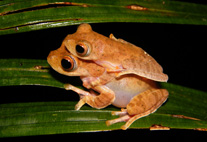Abstract
New Zealand contains 13 of the 69 species of Crotonia described globally and is the only place where all three genera of the Crotoniinae—Crotonia, Austronothrus and Holonothrus—have been recorded. Due to the pioneering work of Hammer (1966) and Luxton (1982) it also has the highest number of distribution records of Crotonia spp. anywhere. In the present study I build upon previous work to re-examine the Crotonia fauna of New Zealand in the light of recent taxonomic and biogeographical research. A new species is described, C. ramsayi sp. nov., a member of the Unguifera species group, and supplementary descriptions are provided for C. brachyrostrum (Hammer 1966), C. caudalis (Hammer, 1966), C. cophinaria (Michael, 1908), and C. unguifera (Michael 1908), as well as a key to species. Crotonia spp. from New Zealand occur predominantly in localities with relatively low mean annual temperature and high water balance, reflecting a requirement for cool, moist conditions. In New Zealand Crotonia spp. occur in an extremely wide variety of vegetation communities compared with other regions in its range (Australia, Africa and South America), and this is indicative that water balance requirements are met, regardless of vegetation type. Some elements of the New Zealand Crotonia fauna, notably the Cophinaria species group, are common to Australia, Africa and South America, indicating a shared evolutionary history pre-dating the separation of Africa from Gondwana 110 mya. The high proportion of species that occur west of the Alpine Fault is consistent with a relictual distribution of Gondwanan elements on the Australian Plate. However, it is unclear whether uplift of the Southern Alps formed a barrier to dispersal. A high representation of the morphologically closely-related Obtecta, Flagellata and Unguifera groups, shared only with South America (and, for Unguifera, with Oceania) represents a dramatically different faunal composition compared with other former Gondwanan landmasses and is consistent with submergence of most of New Zealand during the Oligocene (ca. 25 mya). All of these characteristics indicate a distinctive evolutionary pathway for the Crotonia fauna since New Zealand separated from the rest of Gondwana 80 mya.

